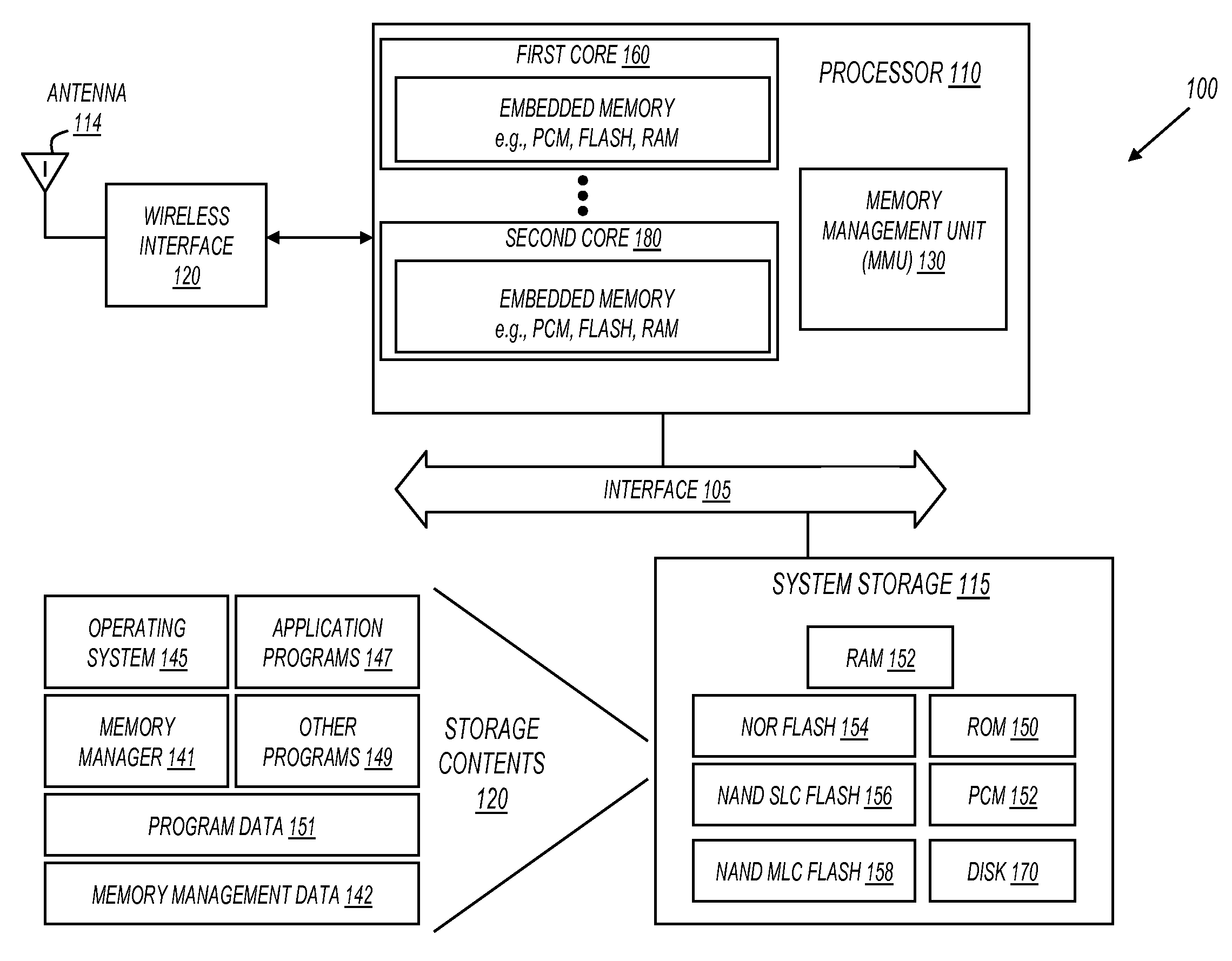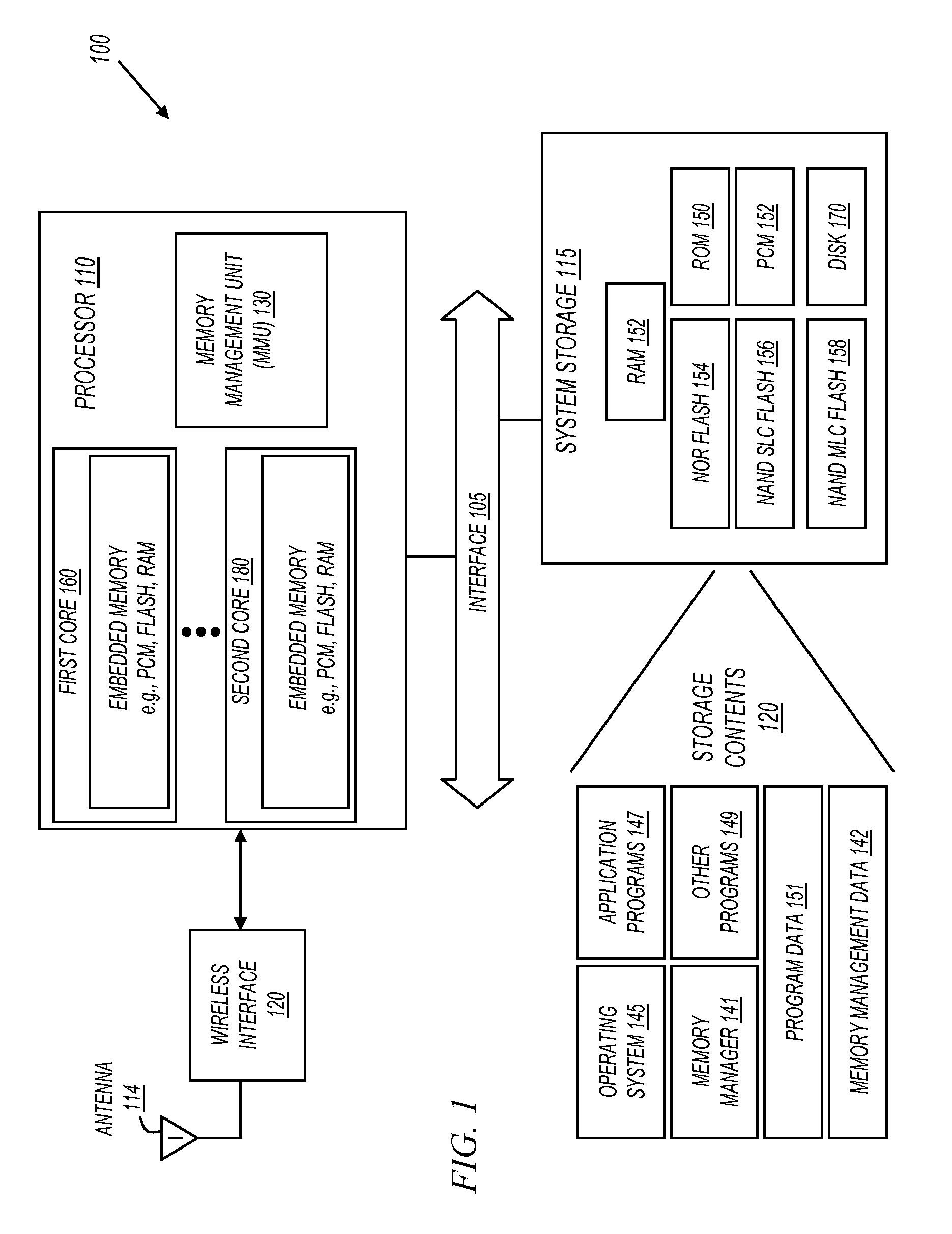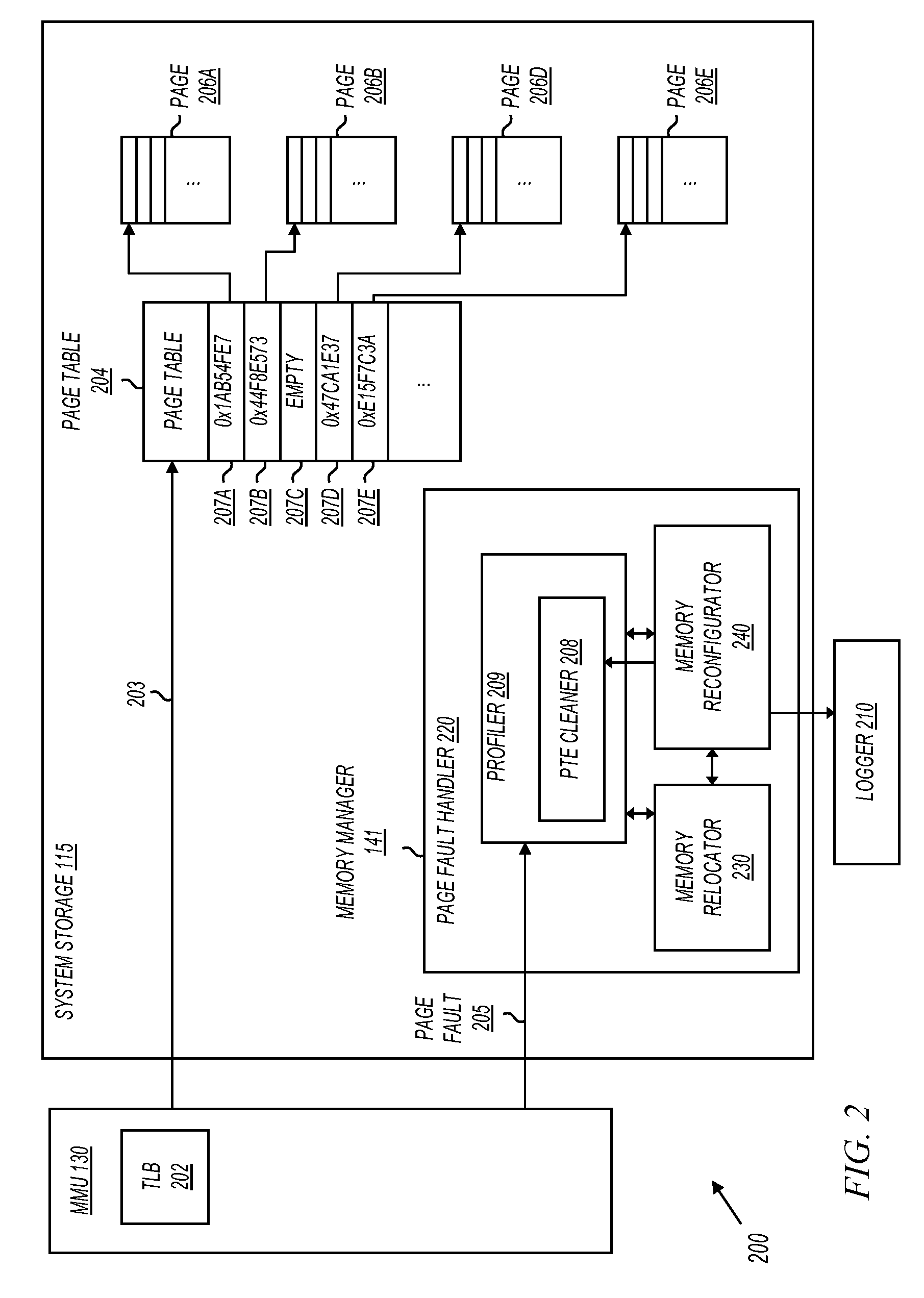Method and Apparatus for Efficient Memory Placement
a memory placement and memory technology, applied in the field of data storage, can solve the problems of affecting the performance of the memory, and increasing the cost,
- Summary
- Abstract
- Description
- Claims
- Application Information
AI Technical Summary
Problems solved by technology
Method used
Image
Examples
Embodiment Construction
[0008]Embodiments of the invention provide a method and system for profiling memory objects that reside in different types of memory devices. For example, the read, write, and execution frequency of memory objects held in volatile memory (e.g., RAM and DRAM) may be profiled. Also for example, the read, write, and execution frequency of memory objects held in nonvolatile memory (e.g., FLASH and PCM) may be profiled. As a result of profiling, memory objects may be identified as candidates to be relocated to and accessed directly from other types of memory devices in an electronic system.
[0009]FIG. 1 shows a system 100 in accordance with various embodiments of the invention. System 100 may be a device useful for memory profiling. System 100 may also be an end-user device. In some embodiments, system 100 is both an end-user device and a device capable of performing memory profiling. For example, system 100 may be a mobile phone with built-in memory profiling capabilities. Also for examp...
PUM
 Login to View More
Login to View More Abstract
Description
Claims
Application Information
 Login to View More
Login to View More - R&D
- Intellectual Property
- Life Sciences
- Materials
- Tech Scout
- Unparalleled Data Quality
- Higher Quality Content
- 60% Fewer Hallucinations
Browse by: Latest US Patents, China's latest patents, Technical Efficacy Thesaurus, Application Domain, Technology Topic, Popular Technical Reports.
© 2025 PatSnap. All rights reserved.Legal|Privacy policy|Modern Slavery Act Transparency Statement|Sitemap|About US| Contact US: help@patsnap.com



